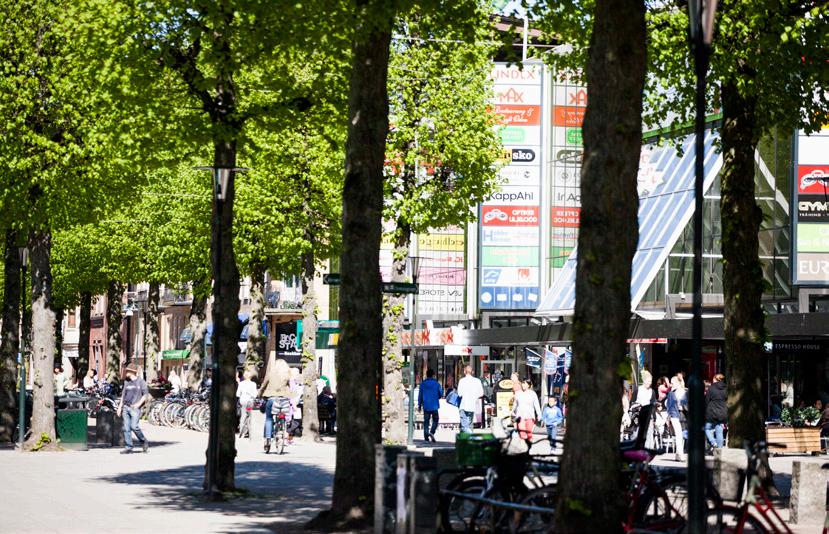
3 minute read
To create inspiring and productive collaborative environments on campus
STRATEGY
TO DEVELOP A SUSTAINABLE CAMPUS
Advertisement
Outlining the global goals for sustainable development, Agenda 2030 will underpin the continued process of developing the campus.
REDUCING CLIMATE IMPACT
The academic world has a key role to play in counteracting negative climate change. The so-called Klimatramverket (Climate Framework) is an initiative taken by universities and higher education institutions the aim of which is to make a clear contribution to climate change in line with society’s national and international commitments. Along with 35 other institutions, we have committed to reducing our negative climate impact in line with the 1.5 degree target, that is, by achieving a 50% reduction by 2030 and hitting net-zero emissions by 2045.
EFFECTIVE PROVISION OF PREMISES
In accordance with the recommendations of the Swedish National Audit Office in its report entitled “Provision of Premises in Centres of Learning – Room for Development”3 the University shall endeavour to effectively utilise all of its premises. Through sustainable planning and effective utilisation of premises, resources can be devoted to the right areas. This also enables potential future expansion without increasing the portfolio of premises.
COMMITMENTS AND STRATEGIC CHOICES
In summary, this will entail commitments and strategic choices in our day-to-day activities, during procurement and various purchases, in how we utilise our premises and on work to develop our campus.
• The development of the campus will be subject to climate requirements for all procurement of products and services, where relevant. These requirements will be reviewed systematically.
• Energy consumption at the University shall be reduced by m2, and the energy used will be renewable. Moreover, the University's internal production of renewable energy will increase.
• To reduce carbon dioxide emissions associated with the
University’s purchase of equipment and consumables from a life-cycle perspective. • To develop the campus so as to encourage travel to and from the area with as little environmental impact as possible.
• Carbon dioxide emissions associated with catering and the restaurant shall be reduced.
• To minimise carbon dioxide emissions associated with new-builds and reconstruction.
• To create systems for monitoring carbon dioxide emissions generated by the activities run on campus.
PRIORITISED PROJECTS
• Implementation of plan for reducing climate impact

STRATEGY

The University’s ambition is to grow and create more opportunities for collaboration on campus. The location of the campus area in the city centre means we form a key part of the city’s work on drawing up sustainable connections and parking solutions.
A MORE CYCLE-FRIENDLY CAMPUS
We make travelling by bicycle easier with clearly demarcated cycle paths and improved parking facilities for bikes. We are building an easily accessible, centrally located bicycle storage point, including service facilities such as air pumps.
IMPROVED PUBLIC TRANSPORT
We are working with the city on measures to improve public transport solutions between the travel centre, the University campus and the Innovatrum area, including the PTC.
PARKING FACILITIES THAT CAN BE USED BY MANY
We work alongside Trollhättan Municipality and Kraftstaden on measures to create sustainable parking facilities in the campus area and centre. During reconstruction of the campus square, new parking facilities for Maria Alberts’ staff can be provided by the north-east wing of the University, besides the University car park.
PRIORITISED PROJECTS
• Collaboration with Kraftstaden on investigation into a cycle-friendly campus








